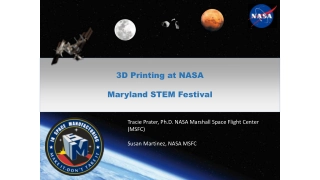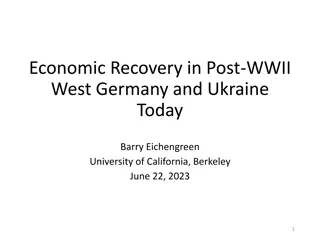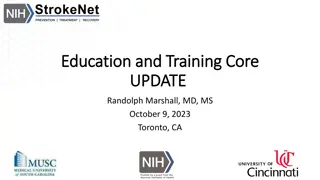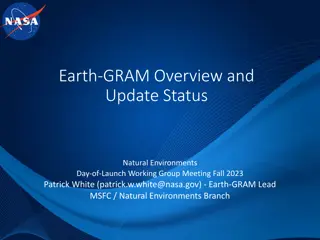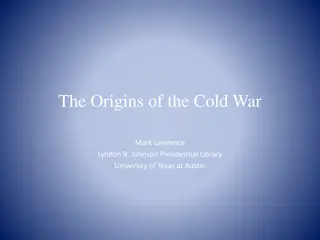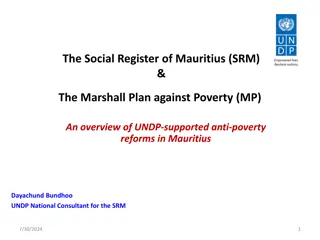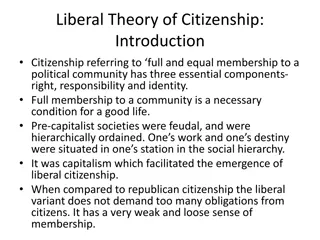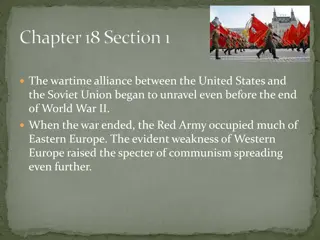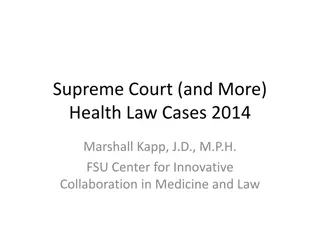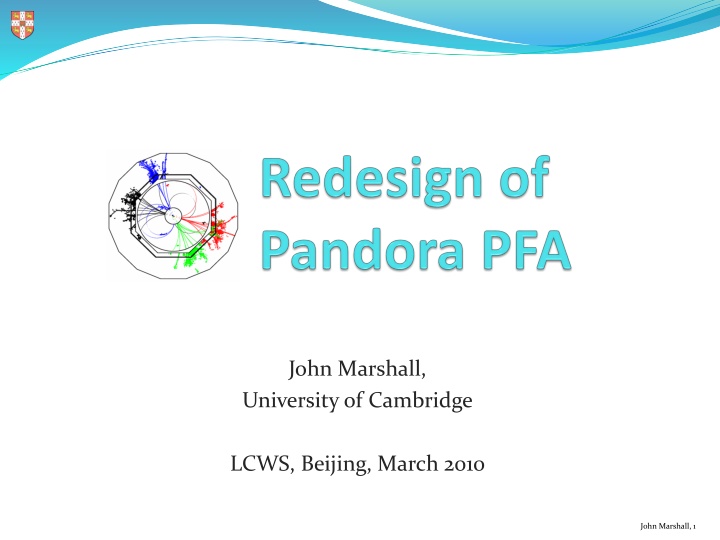
Particle Flow Calorimetry and Pandora Algorithm at University of Cambridge
Explore the advancements in particle flow calorimetry and the Pandora algorithm development at the University of Cambridge. Learn about the structure, redesign, and goals of these innovative technologies for enhancing jet energy resolution in high-energy physics experiments.
Download Presentation

Please find below an Image/Link to download the presentation.
The content on the website is provided AS IS for your information and personal use only. It may not be sold, licensed, or shared on other websites without obtaining consent from the author. If you encounter any issues during the download, it is possible that the publisher has removed the file from their server.
You are allowed to download the files provided on this website for personal or commercial use, subject to the condition that they are used lawfully. All files are the property of their respective owners.
The content on the website is provided AS IS for your information and personal use only. It may not be sold, licensed, or shared on other websites without obtaining consent from the author.
E N D
Presentation Transcript
John Marshall, University of Cambridge LCWS, Beijing, March 2010 John Marshall, 1
Pandora PFA + n In a typical jet: 60% of jet energy is in the form of charged hadrons 30% is in photons (mainly from 0 ) 10% is in neutral hadrons (mainly n and KL) EJET = EECAL +EHCAL Particle flow calorimetry aims to improve jet energy resolution by: Measuring charged particles in detector tracker (essentially perfectly) Measuring photon energies in the ECAL E/E < 20% / E(GeV), Only measuring neutral hadron energies in the HCAL, largely avoiding the intrinsically poor HCAL resolution. EJET = ETRACK +E + En E/E (rms90) EJET The Pandora Particle Flow Algorithm: Initially developed for the ILD detector concept. The most mature PFA, giving the best performance. Its algorithms are now well tested and understood. Fully documented, NIMA 611 (2009) 25-40 Meets ILC jet energy goal of ~3.5 % at all relevant jet energies. 45 GeV 3.7 % 100 GeV 2.9 % 180 GeV 3.0 % 250 GeV 3.1 % John Marshall, 2
Pandora Redesign Whilst Pandora works well, current code has reached a point where it is extremely difficult to extend. It is not flexible enough to try out new ideas and improvements... ILD Letter of Intent version of Pandora has been frozen and a new version is being written from scratch. This is much more than just a re-implementation; Pandora is now a framework for running decoupled particle flow algorithms: Increased flexibility, designed to make it easy to try out new ideas Independent of any specific software framework and any specific detector details Properly designed code, taking findings from previous PFAs into account, makes it easier to maintain Easier for other people to get involved; simple for users to create and run their own algorithms Pandora framework helps separate physics in particle flow algorithms from C++ memory management The new Pandora is a separate library, with no dependencies. A user application, in any framework, accesses the library via a simple C++ API (application programming interface). Will now give an overview of new Pandora framework, summarise current status and present first results... John Marshall, 3
New Pandora Structure Pandora Algorithms: User Application: Pandora Framework, can treat as black box : Clustering Algorithm Specify Geometry Topological Associations Algorithm Algorithm Manager Create Calo Hits Particle Flow Object Manager Pandora Content API Calo Hit Manager Statistical Reclustering Algorithm Create Tracks Pandora API Create MC Particles Photon ID Algorithm Track Manager Cluster Manager Pandora Register User Algorithms Fragment Removal Algorithm Pandora Settings MC Manager Track-cluster Association Algorithms Geometry Helper PFO Construction Algorithm Get Particle Flow Objects John Marshall, 4
Pandora API User Application, e.g. ILDPandora To run Pandora, a user needs to write a small application in their chosen software framework. This application uses the PandoraAPI to supply Pandora with details of the detector geometry and of the calo hits and tracks in each event. Pandora then builds its own simple objects. PandoraApi::Track::Parameters parameters; parameters.m_d0= ...; ... PandoraApi::Track::Create(pandora, parameters); Pandora API Construction of these objects is simple; the user makes a Parameters class, fills the member variables and then calls the API Create function. Example member variables for a track: d0, z0, track state at start, track state at ECal, etc. Track Manager Cluster Manager MC Manager All member variables must be specified, or an exception will be thrown when Create is called. The user can provide this information in any order, then call the API ProcessEvent function. Finally, user calls the API GetParticleFlowObjects function. Particle Flow Object Manager Calo Hit Manager Pandora John Marshall, 5
Pandora Objects Calo Hit Cluster List of constituent calo hits, ordered by pseudolayer Mip fraction EM energy measure Had energy measure Initial direction Current direction Result of linear fit to all hits in cluster Energy-weighted centroid ShowerStart layer Shower profile properties List of associated tracks Track PDG Code Charge Mass Energy Momentum List of tracks List of clusters Particle Flow Object Position + normal vectors Calorimeter cell size Absorber material in front of cell Time of first energy deposition Calibrated energy (mip equivalent, EM, Had) Layer + pseudolayer Hit type + detector region Density weight Surrounding energy IsDigital, IsIsolated + IsPossibleMip flags Associated MC particle Associated user object 2D impact parameters Momentum at d.c.a Particle mass Charge sign Start track state End track state ECal track state ReachesECal flag List of track state projections to calorimeter surfaces Associated cluster Associated MC particle Associated user object PFO formation flag Clusterless PFO formation flag Mixture of properties specified by user and value-added properties, but all simple and well defined physics quantities for use in particle flow algorithms. John Marshall, 6
Pandora Managers Track Manager Pandora Managers are designed to store named lists of their respective objects. These objects can be accessed by the Pandora Algorithms, which perform the reconstruction. The algorithms interact with the Managers in a controlled way, via PandoraContentAPI, and the Managers perform the memory management. Cluster Manager MC Manager Particle Flow Object Manager Calo Hit Manager Pandora At any instant each Manager has a current list, which can be accessed by an algorithm. Parent algorithms can manipulate the current list in order to control scope and behaviour of daughter algorithms. Pandora Content API e.g. Clustering Algorithm The Managers store information about currently running algorithms so they can keep track of lists. Algorithms can use the PandoraContentAPI to modify lists and/or save new lists. Algorithms can use the API without worrying about how the managers work separation of physics and C++ memory management! John Marshall, 7
Pandora Algorithms In the new Pandora framework, the algorithms contain almost exclusively physics-driven code, alongside the following typical usages of the PandoraContentAPI: Create new clusters and particle flow objects Modify clusters, by adding hits, merging or deleting Access the current lists of Pandora objects Save new lists of clusters, calo hits or tracks Run a daughter algorithm, etc... Static helper functions are provided to perform tasks that are useful to multiple algorithms, such as functions to evaluate the overlap between two clusters or to perform a linear fit to (layers of) a cluster. The Pandora algorithms are configured via xml and can be swapped in/out without recompiling. The algorithms required to reproduce old Pandora performance are: Clustering Topological associations Fragment Removal Photon Id Statistical reclustering Track-cluster association Particle flow object formation John Marshall, 8
Example Algorithm: Clustering To reproduce original Pandora clustering algorithm in new framework, require: A parent algorithm to control operations, A cluster formation algorithm, A topological association algorithm (which may itself run multiple daughter algorithms). i. ii. iii. Parent algorithm asks to run a clustering algorithm; cluster manager then creates a new temporary cluster list, associated with the parent algorithm, sets this as current , and allows new clusters to be formed. Daughter clustering algorithm gets current calo hit and track lists, uses its logic to populate temporary cluster list and returns control to parent algorithm. Parent algorithm then calls topological association algorithm, which cannot form new clusters, but can modify or merge existing clusters. Parent algorithm can then save (a subset of) the temporary clusters as a new named cluster list. Can set new list to be the current list for future algorithms, if desired. Any remaining temporary cluster s will be tidied automatically. John Marshall, 9
Example Algorithm: Reclustering An important part of the Pandora reconstruction is statistical reclustering , in which attempts are made to redistribute hits between clusters in order to improve consistency between cluster energies and associated track momenta. The new algorithm framework and idea of parent algorithms controlling daughter algorithms is designed to make reclustering simple and flexible. A parent reclustering algorithm needs only to perform following operations: Identify inconsistent pairing of track and cluster(s) and ask to recluster these. Relevant clusters will be moved to a new temporary cluster list, associated with the parent algorithm. Current calo hit/track lists changed. i. 18 GeV 30 GeV 12 GeV ii. Ask to run a clustering algorithm. This will create another uniquely named temporary cluster list, which will be filled by the daughter clustering algorithm. 10 GeV Track iii. Calculate a figure of merit for the consistency of the track and new cluster(s). iv. Repeat stages ii. and iii. as required. Can run copies of the same algorithm, with different clustering parameters, or use entirely different approaches. Change clustering parameters and/or clustering algorithm until cluster splits and get sensible track-cluster match Choose most appropriate cluster(s). Cluster lists will be reorganised and tidied accordingly. v. John Marshall, 10
Algorithm Configuration Pandora algorithms are configured via xml, a very natural way to configure nested algorithms: Ideal for quickly experimenting with running new algorithms, or exploring new methods to address problems such as leakage. Easy to mix real and cheating algorithms. The complicated process of reclustering is reduced to the following simple configuration: <!-- Parent reclustering algorithm runs multiple clustering algorithms --> <algorithm type = "Reclustering > <!-- List of daughter clustering algorithms --> <clusteringAlgorithmList> <algorithm type = "ClusteringType1 > ClusteringType1 parameters ... </algorithm> <algorithm type = "ClusteringType2 > ClusteringType2 parameters ... </algorithm> <algorithm type = "ClusteringTypeN > ClusteringTypeN parameters ... </algorithm> </clusteringAlgorithmList > <!-- Other parent reclustering algorithm properties ... --> </algorithm> Pandora will provide a comprehensive library of built-in algorithms. However, want other people to get involved: Quick and easy for a user to create their own algorithm. We provide a template; just need to inherit from the Pandora Algorithm base class. User then calls functions available via API and implements their algorithm logic. The new type of algorithm is registered with Pandora via an API. User then just needs to add the algorithm settings to the xml file (there is an XmlHelper to make reading these settings very easy). The algorithm will then run in the Pandora framework, without needing to recompile Pandora. John Marshall, 11
Algorithm Status Clustering The main Pandora clustering algorithm is a cone-based forward projective method. Working from innermost to outermost pseudolayer, the algorithm either adds hits to existing clusters or uses them to seed new clusters. This algorithm has been fully implemented in the new framework and tested extensively; the new code exactly reproduces the old Pandora clusters. This re-implementation was an opportunity to clean up an algorithm that had changed many times during development; now more efficient. Code is clean and readable and have now fully separated the framework/objects from the actual algorithm. Configuration options have been tweaked to identify independent and physically motivated parameters. John Marshall, 12
Algorithm Status Topological Associations The approach in Pandora is to err on side of splitting up true clusters, then merge the clusters following a number of topological rules. Each of these rules has been implemented via an algorithm in the new Pandora framework. The algorithms essentially compare pairs of clusters, applying a series of cuts to identify whether the clusters should be merged. Cone associations Looping tracks Back-scattered tracks Many of the quantities, upon which cuts are placed, are useful properties characterising cluster interactions. As such, they are calculated by re-usable helper functions. The algorithms have been validated and they fully reproduce the performance of the old Pandora code. During this process, some improvements were identified and these have been implemented. The improvements were cross-checked using old Pandora . Track-like cluster points back to shower Track segment pointing to shower Proximity John Marshall, 13
Algorithm Status Track-Cluster Associations The basic method for associating tracks to clusters is to examine the distance of closest approach between a cluster and the projected track state at the ECal. Algorithms have also been implemented that consider the following: The distance between clusters and the projection of a track helix fit. The consistency of projected track directions and initial cluster directions. The consistency of the track momentum and the cluster energy. The newly implemented algorithms exactly reproduce the performance of the old Pandora track-cluster association code. In the new framework, it is simple to experiment with new association methods or to alter the point(s) in the reconstruction at which associations are made. John Marshall, 14
Algorithm Status Fragment Removal 7 GeV cluster 6 GeV After the topological associations, there are still a significant number of neutral clusters, which are really fragments of charged particle hadronic showers. The fragment removal algorithms attempt to identify these clusters and merge them with the appropriate parent charged cluster. 6 GeV cluster 9 GeV 9 GeV 9 GeV track Distance of closest approach Layers in close contact Associations are made by assessing cluster contact and proximity, together with track association information. Many of the quantities used to identify fragments have been implemented as re-usable helper functions. 3 GeV 4 GeV An algorithm has also been implemented to collect together the fragments of neutral hadron clusters. 3 GeV 6 GeV The fragment removal algorithms have been fully implemented and validated. They exactly reproduce the performance of the old Pandora code. 5 GeV 9 GeV Distance to track extrap. Fraction of energy in cone John Marshall, 15
Algorithm Status Photon ID Charged hadron cluster The old version of Pandora offered several approaches to photon cluster identification. In the new Pandora, a fast photon id helper function has been provided, which reproduces the basic photon id from the old code. Shower profile id helper functions have also been provided. Photon cluster Peter Speckmayer has been working on a separate algorithm, which takes the output from the clustering algorithm, applies a shower-profile based selection and saves the photon clusters as a separate named cluster list. The removal of these clusters allows for improved identification of hadronic showers when the clustering algorithm is called again. Can simply plug-in this algorithm to provide an alternative photon ID, without changing any other code. Note: performance plots shown later use only fast photon id. John Marshall, 16
Algorithm Status PFO Formation The final step is to identify the particle flow objects from the tracks and clusters and to write them out for analysis. The current PFO formation algorithm is rather simple, with no sophisticated particle identification yet applied. In the long term, aim to provide particle identification functions and to allow user to register their own, detector specific, particle id helper functions via PandoraAPI. In the current code, charged PFOs are created from tracks with associated clusters; remaining clusters are used to form neutral PFOs. Tracks which have no associated clusters, but which are deemed to be low pT, are still used to form charged PFOs. Fast photon id is used to determine whether neutral PFOs should use electromagnetic or hadronic energy measure. neutral hadron charged hadron photon The PFO creation is ready to respond to any track relationship information provided to identify track kinks, v s, etc. John Marshall, 17
Remaining Work At high jet energies, performance degrades due to increasing overlap between hadronic showers from different particles: e.g. If these hits are clustered together with these, lose energy deposit from neutral hadron (now part of track particle) and ruin jet energy measurement. Pandora addresses this problem with statistical reclustering, illustrated earlier. Clusters that have been incorrectly merged together are identified via consistency of cluster energy and associated track momentum. Attempts are made to redistribute the hits by using different clustering parameters or entirely different clustering algorithms. Algorithms that steer the reclustering have been implemented and observed to work. However, no formal validation yet. Want to spend some time here, deviating from original Pandora, to tidy these steering algorithms and more clearly define the role of each. Have designed some better defined algorithms that should match (or improve on) performance of old code. 38 GeV 18 GeV 12 GeV 32 GeV 30 GeV Track John Marshall, 18
Remaining Work Track relationship information New Pandora code deals with specified track parent, daughter and sibling relationships. Uses this information when associating tracks to clusters and when forming charged PFOs. However, have yet to input this information. Have external v and kink finder code for ILD. Simply need to pass information to Pandora and test thoroughly should see immediate improvement in jet energy reconstruction. Leakage correction For high energy jets, non-containment of showers is significant. To address this issue, first need identification of clusters exiting the detector. Can then use this information when e.g. considering track- cluster consistency in reclustering. May reproduce old Pandora use of muon chamber information to estimate leakage and energy deposition in the coil, before using flexibility of new framework to investigate new ideas. John Marshall, 19
First Results 91GeV |cos | < 0.7 All Events First tests were performed for the ILD detector concept, using MC samples of approximately 10,000 Z uds generated with the Z decaying at rest with Ez= 91.2GeV. At this energy, all newly implemented code and framework is exercised, without (a strong) need for statistical reclustering and/or leakage corrections. For fair comparison, reclustering, leakage corrections and all use of track-relationship information was turned off in old Pandora (all still work in progress for new Pandora). Excellent agreement observed, by construction (and a lot of hard work!). E/ E (rms90) = 3.79% c.f. old Pandora 3.87% without reclustering and track relationship information John Marshall, 20
First Results 91GeV Charged PFOs Neutral PFOs Looking at the 91GeV results in more details, see that PandoraPFANew reproduces not just the total jet energy, but also the division into charged and neutral PFOS. In fact, each PFO is (essentially) identical in its composition and energy measure. There are, however, some small known and understood differences, where it has been necessary to use slightly different approach. PFO energy sum, old vs. new John Marshall, 21
First Look at Higher Energies 200 GeV, |cos | < 0.7 360 GeV, |cos | < 0.7 These plots give only a first indication of performance at higher energies. Close agreement observed between new and old code, for the algorithms that have been implemented. Can t use as a measure of performance yet, as important details for high energy missing. Remaining work involves reproducing (and improving on) full treatment of high energy events provided by the old Pandora code. 500 GeV, |cos | < 0.7 John Marshall, 22
Summary The new Pandora framework is complete and has been rigorously tested. It is stable and has been unchanged for several months now. The majority of original Pandora algorithms have now been fully implemented and tested, providing a full reconstruction (and exact reproduction of old Pandora results) at low energies. Now need to address high energy issues; work on leakage corrections and statistical reclustering. Will start to deviate from the old Pandora approach in reclustering, as aim for better defined algorithms that match (or improve on) original performance. Should also mention progress with the applications that use the Pandora library: ILD Pandora application completed (our default test application), Norman Graf and Jeremy McCormick have started a SlicPandora application, Both applications are Marlin Processors that use the PandoraAPI to access the Pandora library. After the high energy reconstruction is complete, have many ideas for moving forwards and improving Pandora within the new framework: New clustering algorithms, Long list of possible topological association improvements, More sophisticated particle identification, Very easy for other people to get involved and write new algorithms or contribute ideas. John Marshall, 23

